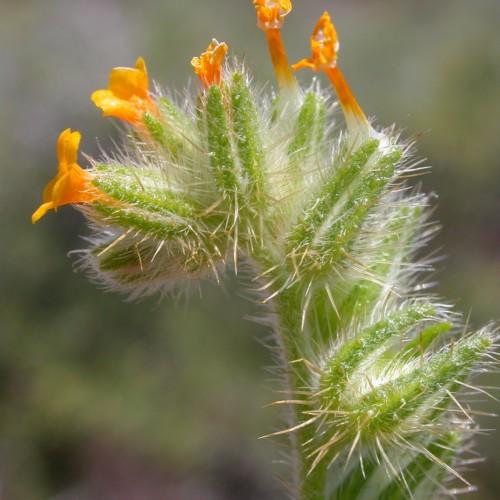
Bugloss Fiddleneck
Amsinckia lycopsoides
Also Known As - Tarweed FiddleneckWatering:
Average
Hardiness Zone:
Sun:
full sun,part shade
Growth Rate:
Low
Drought Tolerant:
Yes
Salt Tolerant:
Yes
watering
Nevada Bulrush (Amphiscirpus nevadensis) should be watered once per week during the growing season in the spring and summer months, generally 2-3 gallons per plant. These plants prefer to have their soil kept moist but not soggy; if the soil has started to dry out, they can handle additional waterings. In addition, during hot spells, they may require more frequent, light waterings in order to keep their soil moist. During the colder winter months, waterings should be scaled back to once every 2 weeks or even once per month. When watering, water should be applied directly to the root area and not allowed to pool on the foliage.
sunlight
Nevada Bulrush is adapted to full sun and does best in bright, direct sunlight. In its natural desert habitat, it receives 7-10 hours of direct sunlight each day. In more temperate climates, it should receive at least 4-5 hours of full sun daily to thrive. It should be placed in a spot that receives unobstructed sunlight for most of the day. The plant prefers midday and afternoon sun but can tolerate morning sun as well. In exceptionally hot climates, partial shade may be necessary to protect it from heat stress during the middle of the day.
pruning
Pruning of Nevada Bulrush should take place in late summer or early fall when the plant is dormant. Prune the plant back to the desired size and shape, removing any dead or dying foliage. Taking away no more than 1/3 of the live foliage at once is important to prevent damage to the plant.Nevada Bulrush respond well to pruning and may require it to produce the desired look or shape.
